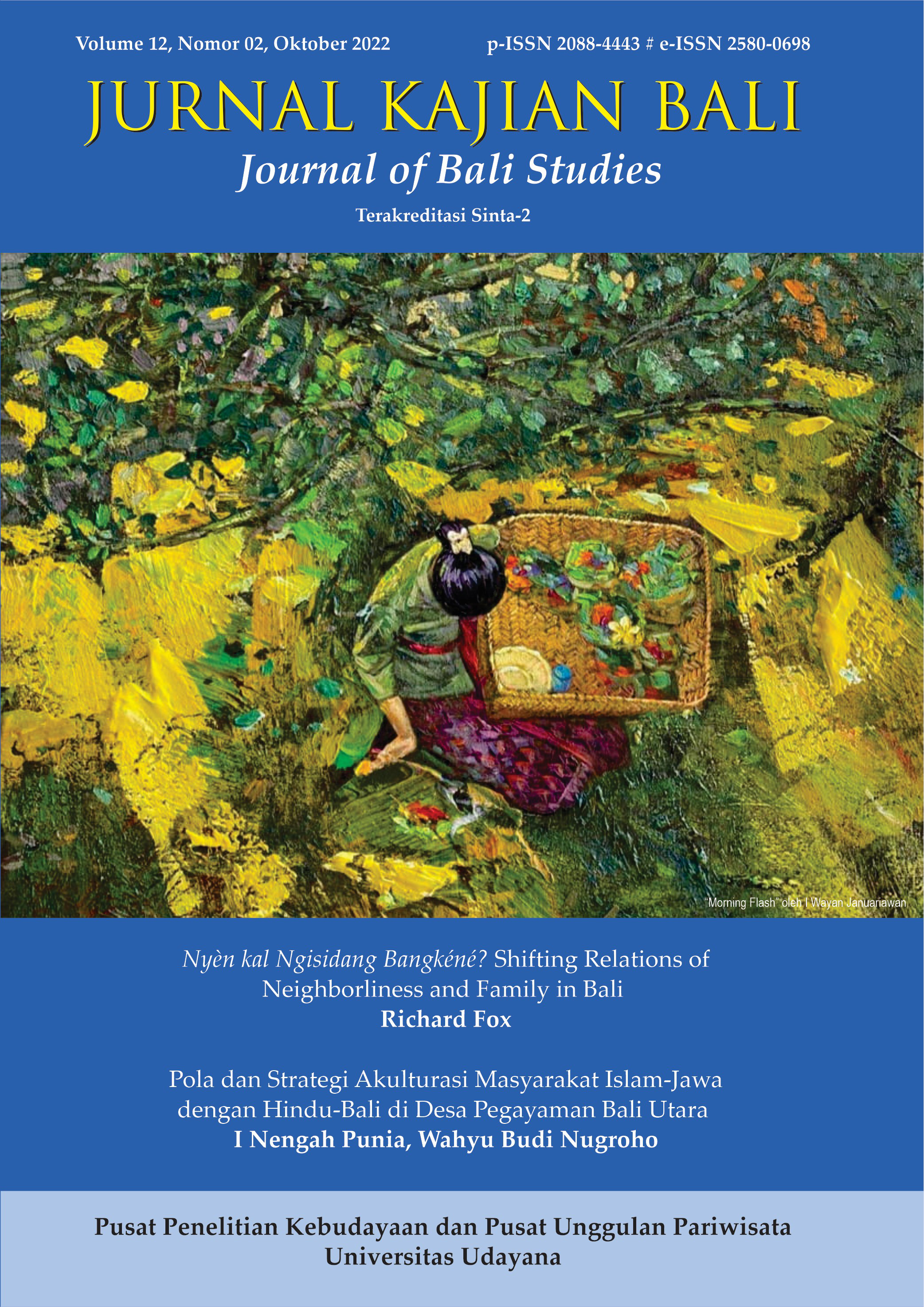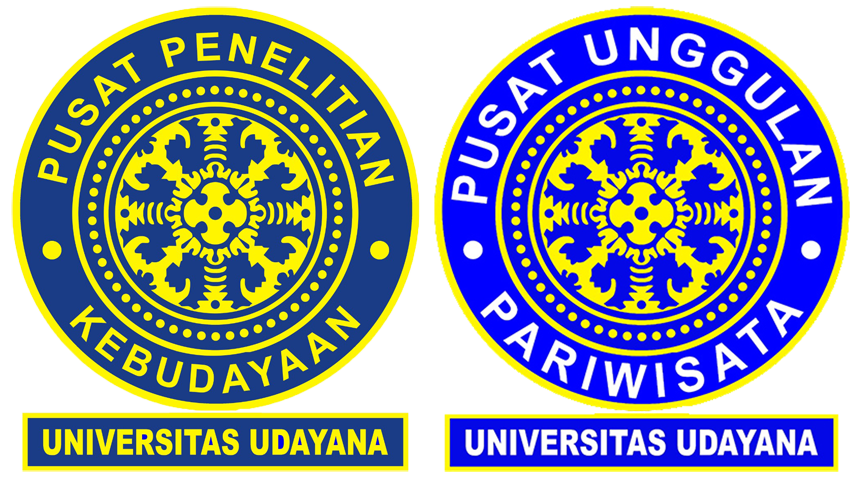Nyèn kal ngisidang bangkéné? Shifting Relations of Neighborliness and Family in Bali
Abstract
Balinese forms of social organization, collective labor and solidarity are gradually being transformed – and often displaced – by new social institutions and their attendant ideals, desires and pleasures. The rise of the nuclear family, as a new social ideal and institution, is one the more important developments in this connection. This essay examines rival conceptions of the family, and of household economy, that underpinned a debate that took place in a southerly Balinese ward over the provision of neighborly assistance during six-monthly odalan ceremonies. The analysis provides insight into how social and cultural transformation is understood and experienced at the level of day-to-day life.
Downloads
References
Fox, R. (2017) ‘Of family, futures and fear in a Balinese ward: Some preliminary thoughts toward a new project’. Jurnal Kajian Bali. 7(1): 213-48.
Hobart, M. (1979) A Balinese Village and Its Field of Social Relations. PhD diss., University of London.
Hobart, M. (2011) ‘Bali is a brand: a critical approach’. Jurnal Kajian Bali . 1(1): 1-26.
Hooykaas, C. (1973) Religion in Bali. E.J. Brill: Leiden.
Hooykaas, C. (1974) Cosmogony and Creation in Balinese Tradition. The Hague: Nijhoff.
Hull, T. (1997) “Fertility Decline in Indonesia: An Institutionalist Interpretation.” International Family Planning Perspectives. 13(3): 90-5.
Hull, T.H. (2012). ‘Fertility in Southeast Asia’, Demographic Change in Southeast
Asia: Recent Histories and Future Directions. Pages 43–64. Ithaca, NY: Cornell Southeast
Asia Program Publications.
Hunter, T.M. (2010) ‘Icons, Indexes, and Interpretants of a Balinese Ritual Artefact: The Pengajeg. In: Michaels, A. (ed.) Ritual Dynamics and the Science of Ritual. Vol. 4: Reflexivity, Media, and Visuality. Harrasowitz. Pages 505-36.
Jennaway, M. (2002) Sisters and Lovers: Women and Desire in Bali. Lanham: Rowman & Littlefield Publishers.
Jones, G.W., C.H. Leng & M. Mohamad (2009) Muslim-Non-Muslim Marriage: Political and Cultural Contestations in Southeast Asia. Singapore: Institute of Southeast Asian Studies.
Lovric, B.J.A. (1987) Rhetoric and Reality: The Hidden Nightmare; Myth and Magic as Representations and Reverberations of Morbid Realities. Unpublished Dissertation, University of Sydney.
Nakatani, A. (1995) Contested Time: Women's Work and Marriage in Bali. Unpublished Dissertation, University of Oxford.
Newland, L. (2001) “The Deployment of the Prosperous Family: Family Planning in West Java.” Feminist Formations. 13(3): 22-48.
Parker, L. (2003) From Subjects to Citizens: Balinese Villagers in the Indonesian Nation-State. Copenhagen: NIAS Press.
Picard, M. (1996) Bali: Cultural Tourism and Touristic Culture. Singapore: Archipelago.
Shiraishi, S. (1997) Young Heroes: The Indonesian Family in Politics. Ithaca, NY: Cornell University Press.
Situmorang, A. (2011). ‘Delayed Marriage among Lower Socio-economic Groups in an Indonesian Industrial City’, in: Gavin W. Jones, Terence H. Hull and Maznah Mohamad (eds), Changing Marriage Patterns in Southeast Asia: Economic and Socio-cultural Dimensions. Pages 83–98. New York: Routledge.
Smith-Hefner, N.J. (2019) Islamizing intimacies: Youth, sexuality, and gender in contemporary Indonesia. Honolulu: University of Hawai‘i Press.
Utomo, A.J., A. Reimondos, I.D. Utomo, P.F. McDonald & T.H. Hull (2016). ‘Transition into Marriage in Greater Jakarta: Courtship, Parental Influence, and Self-choice Marriage’. Southeast Asia Research. 24(4):492–509.
Vickers, A. (1989) Bali; A Paradise Created. Berkeley & Singapore: Periplus Editions.

This work is licensed under a Creative Commons Attribution 4.0 International License.



















